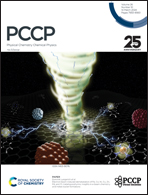Symmetry constraints on the orientation dependence of high-order elastic constants for the hexagonal boron nitride monolayer
Abstract
Group theory is a powerful tool to explore fundamental symmetry constraints for the physical properties of crystal structures, e.g. it is well-known that only a few components of the elastic constants are independent due to the symmetry constraint. This work further applies group theory to derive constraint relationships for high-order elastic constants with respect to the orientation angle, where the constraint relationships are more explicit than the traditional tensor transformation law. These analytic symmetry constraints are adopted to explain the molecular dynamics simulation results, which disclose that the high-order elastic constants are highly anisotropic with an anisotropy percentage of up to 25% for the hexagonal boron nitride monolayer. The elastic constant is a basic quantity in the mechanics field, so its high anisotropy shall cause strong anisotropy for other mechanical properties. Based on the anisotropic high-order elastic constants, we demonstrate that Poisson's ratio is highly anisotropic for the hexagonal boron nitride at large strains. These findings provide fundamental insights into the symmetry dependence of high-order elastic constants and other mechanical properties.



 Please wait while we load your content...
Please wait while we load your content...